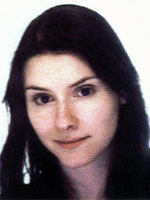Dr Fiona Edmonds

Academic Interests
History of Scotland, northern England, Ireland, Wales and the Isle of Man between the seventh and the twelfth centuries; connections between different areas of the Insular world; Gaelic-Scandinavian contact; the kingdom of Northumbria; material culture; interdisciplinary approaches; digital mapping.
She is a Fellow of the Society of Antiquaries of Scotland and a Fellow of the Royal Historical Society.
She is the Co-Investigator of the Leverhulme-funded project: 'Brittany and the Atlantic Archipelago: Contact, Myth and History, 450-1200'. The project runs from 2015-2019.
She was the Co-investigator on the AHRC-funded project: ‘Hagiography at the frontiers: Jocelin of Furness and Insular Politics’ between July 2010 and July 2012. The Principal Investigator was Dr Clare Downham, University of Liverpool.
Selected Publications
- Gaelic Influence in the Northumbrian Kingdom: The Golden Age and the Viking Age (Woodbridge, 2019).
- 'Names on the Norman Edge: the persistence of Gaelic names in "Middle Britain"', in K. J. Stringer and A. Jotischky (eds), The Normans and the "Norman Edge": People, Polities and Identities on the Frontiers of Medieval Europe (London, 2019), pp. 76-99.
- 'Carham: the western perspective', in N. McGuigan and A. Woolf (eds), The Battle of Carham: A Thousand Years On (Edinburgh, 2018), pp. 79-94.
- (and Simon Taylor), 'Languages and names', in K. J. Stringer and A. J. L. Winchester (eds), Northern England and Southern Scotland in the Central Middle Ages (Woodbridge, 2017), pp. 137-72.
- 'The Expansion of the Kingdom of Strathclyde', Early Medieval Europe, 23.1 (2015), 43-88.
- 'H.M. Chadwick and Early Scotland', in Michael Lapidge (ed.), H.M. Chadwick and the Study of Anglo-Saxon, Norse, and Celtic in Cambridge, Cambrian Medieval Celtic Studies 69/70 (2015), pp. 199-214.
- ‘The Emergence and Transformation of Medieval Cumbria’, Scottish Historical Review, 93.2 (2014), 195–216.
- 'Saints' Cults and Gaelic-Scandinavian Influence around the Cumberland Coast and North of the Solway Firth', in Jón Viðar Sigurðsson and Timothy Bolton (eds.), Celtic-Norse Relationships in the Irish Sea in the Middle Ages 800-1200 (Leiden:Brill, 2014), pp. 39-63.
- 'The Furness Peninsula and the Irish Sea Region: Cultural Interaction from the Seventh Century to the Twelfth', in Clare Downham (ed.), Jocelin of Furness: Essays from the 2011 Conference (Donington: Shaun Tyas, 2013), pp. 17-44.
- 'St Cuthbert, St Columba and Ireland: Movements of Relics in the 870s', in Nancy R. McGuire and Colm Ó Baoill (eds.), Rannsachadh na Gàidhlig 6 (Aberdeen: An Clò Gàidhealach, 2013), pp. 1–29.
- (ed. with Paul Russell), TOME: Studies in Medieval Celtic History and Law in Honour of Thomas Charles-Edwards (Woodbridge: Boydell and Brewer, 2011).
- ‘A twelfth-century migration from Tegeingl to Lancashire’, in T. M. Charles-Edwards and R. Evans (eds.), Wales and the Wider World (Donington: Shaun Tyas, 2010), pp. 28–56.
- Whithorn’s Renown in the Early Medieval Period: Whithorn, Futerna and magnum monasterium, Whithorn Lecture 16 (Stranraer: Stranraer and Wigtownshire Free Press, 2009).
- ‘History and names’, in James Graham-Campbell and Robert Philpott (eds.), The Huxley Viking Hoard: Scandinavian Settlement in the North West (Liverpool: National Museums Liverpool, 2009), pp. 3–12.
- ‘Personal names and the cult of Patrick in eleventh-century Strathclyde and Northumbria’, in Steve Boardman, John Reuben Davies and Eila Williamson (eds.), Saints’ Cults in the Celtic World, Studies in Celtic History 25 (Woodbridge: Boydell and Brewer, 2009), pp. 42–65.
- ‘The practicalities of communication between Northumbrian and Irish Churches, c. 635–735’, in J. Graham-Campbell and M. Ryan (eds.) Anglo-Saxon/ Irish Relations before the Vikings, Proceedings of the British Academy 157 (Oxford: OUP, 2009), pp. 129–47.
- ‘Barrier or unifying feature? Defining the nature of early medieval water transport in the north-west’, in John Blair (ed.), Waterways and Canal-building in Medieval England (Oxford: Oxford University Press, 2007), pp. 21–36.

